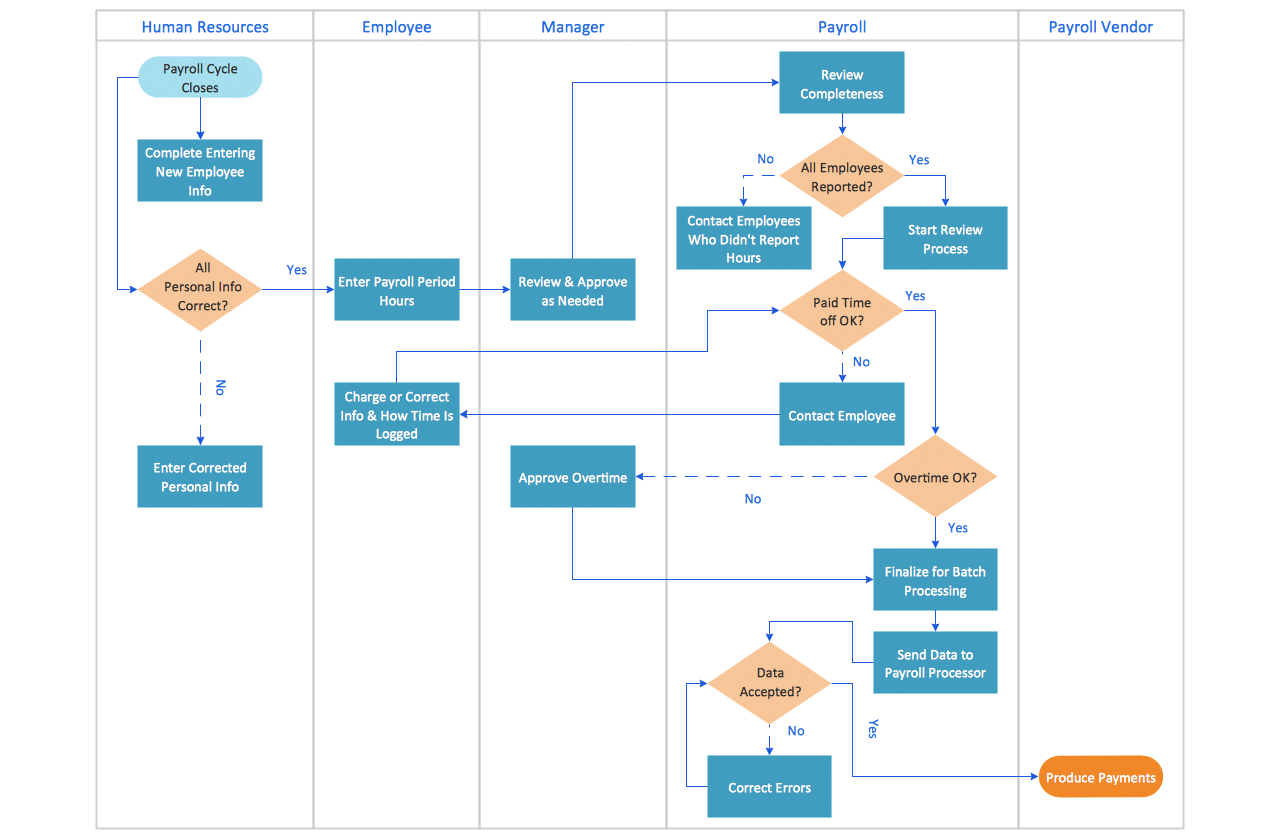
DFDs can provide a focused approached to technical development, in which more research is done up front to get to coding.ĭFD in business analysis: Business analysts use DFDs to analyze existing systems and find inefficiencies.
#FLOW DIAGRAMS SOFTWARE#
It portrays the interface between the other components and is shown with arrows, typically labeled with a short data name, like “Billing details.”ĭata flow diagrams are well suited for analysis or modeling of various types of systems in different fields.ĭFD in software engineering: This is where data flow diagrams got their main start in the 1970s.

It might perform computations, or sort data based on logic, or direct the data flow based on business rules. Process: any process that changes the data, producing an output.They are typically drawn on the edges of the diagram. They are also known as terminators, sources and sinks or actors. They might be an outside organization or person, a computer system or a business system. They are the sources and destinations of information entering or leaving the system. External entity: an outside system that sends or receives data, communicating with the system being diagrammed.

Using any convention’s DFD rules or guidelines, the symbols depict the four components of data flow diagrams. There are other symbol variations in use as well, so the important thing to keep in mind is to be clear and consistent in the shapes and notations you use to communicate and collaborate with others. One main difference in their symbols is that Yourdon-Coad and Yourdon-DeMarco use circles for processes, while Gane and Sarson use rectangles with rounded corners, sometimes called lozenges. Three common systems of symbols are named after their creators: They teamed up in different combinations to be the main definers of the symbols and notations used for a data flow diagram. Three other experts contributing to this rise in DFD methodology were Tom DeMarco, Chris Gane and Trish Sarson. This rigorous documentation approach contrasts with modern agile approaches such as Scrum and Dynamic Systems Development Method (DSDM.) Structured Systems Analysis and Design Method (SSADM), a waterfall method to analyze and design information systems.Object Oriented Analysis and Design (OOAD), put forth by Yourdon and Peter Coad to analyze and design an application or system.It became more popular in business circles, as it was applied to business analysis, than in academic circles.Īlso contributing were two related concepts:

The structured design concept took off in the software engineering field, and the DFD method took off with it. They based it on the “data flow graph” computation models by David Martin and Gerald Estrin. Data flow diagrams were popularized in the late 1970s, arising from the book Structured Design, by computing pioneers Ed Yourdon and Larry Constantine.


 0 kommentar(er)
0 kommentar(er)
